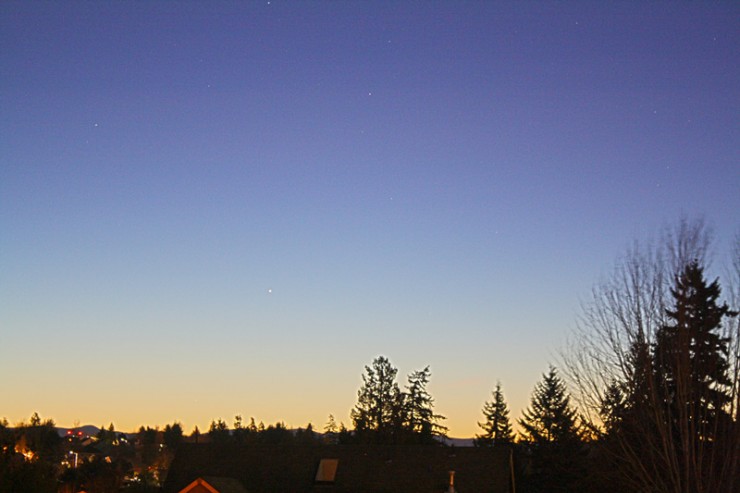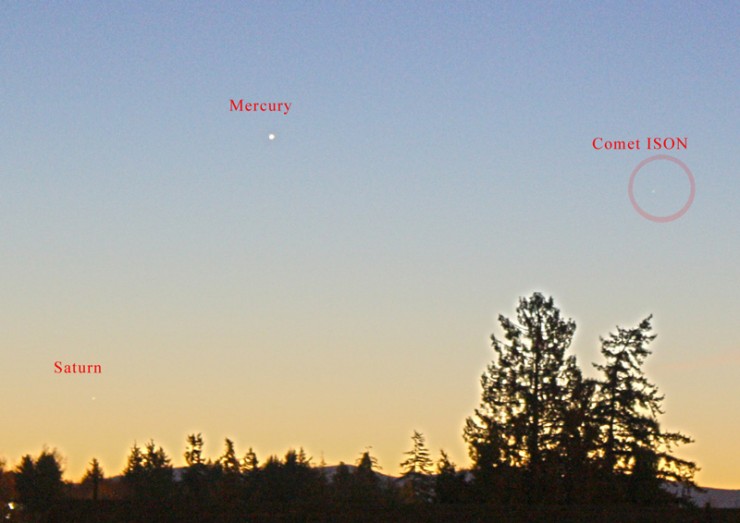Comet ISON November Morning
I don’t see many clear mornings this time of year, but the morning of November 21st was cloudless. Some star twinkle, mostly on the horizon, indicated a thin layer of moisture. Taking advantage of the weather, I took a quick photograph of the sky over the eastern horizon capturing Saturn, Mercury, and Comet ISON among stars. I took three photos at different exposure times to be sure the barely visible comet (by my eye) would be visible.
I used a Canon Rebel Xs DSLR camera with a wired shutter click adapter to avoid shaking the camera and locking the shutter open on the bulb setting. The Rebel is great for astrophotography due to its ability to go completely manual and available telescope adapters to connect to a camera. My photograph was taken using the stock 55mm lens with camera sitting on a tripod.
The 6-second exposure makes the sky appear much brighter, and more importantly, the comet. On the 21st, the comet’s apparent visual magnitude was 4.6 which makes it visible to the unaided eye from beyond city lights. For comparison, Mercury’s apparent magnitude was -0.7. The brightest stars are magnitude of around 1, and magnitude 6 represent stars barely visible to unaided eye from a dark sky away from the city. At 4.6 magnitude and near the glow of the rising sun makes the comet more difficult to find without binoculars. I couldn’t see it without a scope.


The first picture is the unedited photograph showing the eastern horizon. In the second picture, I cropped the size and used an HDR filter to improve the contrast making the comet easier to see. Saturn sits within the glow of the rising sun near the horizon. The comet is that barely visible fuzzy object within the circle. Click to see larger images.
I didn’t bother taking a photograph using a telescope due to the amount of moisture in the air.
Comet ISON will be brightest in the first week of December when the comet is closer to Earth and heading away from the sun. EarthSky.org has a chart showing Comet ISON’s position in December in “Comet ISON nears the sun” along with a pretty picture of the comet photographed using a telescope.